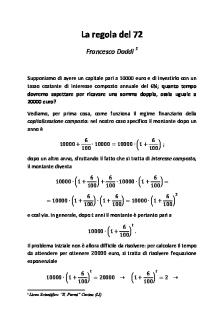CW1 Bill Evans Essay PA4305 - Grade: 72% PDF

| Title | CW1 Bill Evans Essay PA4305 - Grade: 72% |
|---|---|
| Author | Javier Carles |
| Course | Contextual Studies 1: History of Music Genre, 20th-21st Century |
| Institution | University of East London |
| Pages | 4 |
| File Size | 99 KB |
| File Type | |
| Total Downloads | 101 |
| Total Views | 127 |
Summary
A detailed essay (up to 1.500 words) about a chosen musician from either 20th or 21st Century...
Description
BILL EVANS | CW1 PA4305
ID: 1516682
‘It bugs me when people try to analyse jazz as an intellectual theorem. It’s not. It’s feeling. (Bill Evans, 1960, p.114)
This is an example of what jazz was for Bill Evans. But, which is its official definition? From the Oxford English Dictionary, jazz is ‘a type of popular music originating (esp. in ragtime and blues) among African Americans in the southern United States, typically performed by ensembles and broadly characterized by regular forceful rhythms, syncopated phrasing, modifications to traditional instrumental tone and pitch (such as the use of blue notes), and improvisatory soloing’. Nevertheless, Evans went beyond the mere definition of jazz as a music style and defined it ‘as a process of making music, being more a certain creative process spontaneous than a style’ (Bill Evans, 1966), giving thus a unique and personal way of playing and understanding jazz. To understand what roll had in the history of jazz, is extremely important to talk about his beginnings and musical influences.
Bill Evans (1929 – 1980) was raised surrounded of classical music and started pianos lessons at the young age of seven. His firsts music experiences came from artists such as Beethoven, Schumann, Mozart or the impressionists Claude Debussy and Maurice Ravel, who later will assume them – and style of Impressionism itself – as a big influence at the time of playing and harmonize his own musical pieces. Until the age of thirteen he had a strictly knowledge of classical music, but around that time he joined his brother’s band and played ‘Tuxedo Junction’ (Glenn and His Orchestra, 1939), having thus his first jazz experience. He soon delved himself in jazz music, listening to bebop artists such as Bad Powel, Charlie Parker or Oscar Peterson, cool jazz by the hand of Dave Brubeck and probably his biggest influence of popular jazz music: Nat King Cole, referring to him as ‘one of the tastiest and just swingin’est and beautifully melodic improvisers and jazz pianists that jazz has ever known’ […] (Bill Evans, 1965). He soon collaborated with big jazz musicians such as Charles Mingus, Art Farmer, Chet Baker or George Russell. Since then, Bill Evans started to be recognised as a classical jazz pianist, joining Miles Davis’s Sextet at the beginning of 1958. His influence on the trumpeter was that big that Miles confessed in one occasion that ‘Bill had this quiet fire that I loved on piano. The way he approached it, the sound he got was like crystal notes or sparkling water cascading down from some clear waterfall’ (Miles Davis, 1989, p.226).
During the recordings of ‘Kind of Blue’ (1959), Evans took care of the piano, playing thus modal jazz. This branch is characterized by slow-moving harmonic rhythm and the uses of
1
musical modes (specially the Lydian and Dorian ones), being able thus to improvise and move around the instrument as long as he stays within the scale being used. Evans is considered one of the first modal jazz pianists and his contributions to this genre were clearly important and influential. The first song that opens the album, ‘So What’, is a great example of modal jazz where he uses just two chords during its 32-measure duration, creating thus a sensation of ‘call and response’ between the piano and the band. Hence, the song contains fewer chord changes and so the freedom for melodic improvisation is performed by the wind instruments. He also incorporated – and later on would define his way of playing the piano – a technique that soon would become used by the later jazz pianists: rootless voicing. A voicing is the number of notes played in a chord, and the root of a chord are his 3rd, 5th, 7th and sometimes 9th, or a combination of these notes. From here on, the characteristic of this technique is to play chords without the root, giving thus, again, more space and freedom to other instruments – such as the bass – which is playing the roots. Adding large block chords combined with moderate swing makes ‘Kind Of Blue’ a pleasant consecutive album from beginning to end.
Later 1959, he left Miles Davis’s Sextet and continued his career with his own trio, featuring drummer Paul Motian and bassist Scott LaFaro, which would be recognised as one of the bestknown jazz trios. The three of them had a velocity and remarkable fluidity at the time of playing their instruments, though they often performed waltzes – such as the record ‘Waltz for Debby’ (1956) – combined with slow tempo swing and melancholy tones in order to create room within them and Evans. He always showed desire to make the trio ‘grow in the direction of simultaneous improvisation rather than just one guy blowing followed by another guy blowing’ (Bill Evans, 1959), which corroborate its strong interest to ‘sing’ with his trio. What made them special was that the trio itself was one, where neither Evans was the soloist nor LaFaro a mere accompanist. Evans and LaFaro understood each other perfectly when playing, to the extent that the bassist once said in an interview by Martin Williams in Jazz Review that ‘it is quite a wonderful thing to work with the Bill Evans Trio. Bill Evans gives the bass harmonic freedom because of the way he voices, and that’s because of his classical studies. We were each contributing something and really improvising together, each playing melodic and rhythmic phrases’ (Scott LaFaro, 1960). This is one of the qualities that define his way of playing the piano, building an improvisation based on rootles voicing chords progression with his left hand and having thus a wide range of keys to improvise on his right hand, while the bass player feels free to shape his own line to suit the character of the piece.
Bill Evans provided new and delicate techniques of how to harmonize and perform a jazz piece, as well as a new concept of structuring jazz trios where the piano maintains a deep dialogue with the drums and bass. The passage of Bill Evans through jazz marks the birth of cool, which
2
proposes freer and less complex harmonic structures compared to the previous style called bebop. Later on, with the contribution of other musicians of that time – later fifties –, they redefined what jazz was, bringing it to a more intellectual and abstract field. Following this, modal jazz would also define his style, bringing with him a new concept of how to build a melancholy and delicate piece where all the instruments fit together. Due to all of this, I would say that jazz music itself would not have been possible developed without the contribution of Bill Evans.
Many popular jazz musicians such as Chick Corea, Brad Mehldau or Herbie Hancock have taken Bill Evans as a big influence in the development of their way of playing and specially understanding and feeling jazz. And this is what Evans always sought: feeling, because he never played a piece with all his soul, since he always thought it was the only way to develop your own sound.
3
Bibliography Pettinger, Peter (1998). Bill Evans, How My Heart Sings. Yale University Press
Jazz Piano (2013) Available at: http://jazz-piano.org/pianists/bill-evans/
Theory: bill Evans on the Creative Process and Self-Teaching. Available at: http://animationresources.org/theory-bill-evans-on-the-creative-process-and-self-teaching/
4...
Similar Free PDFs

Cw1 - academic english cw1
- 11 Pages

Cw1 - cw1
- 8 Pages

Mbti - Grade: 72
- 2 Pages

Admin Formative - Grade: 72
- 6 Pages

The body as property - Grade: 72
- 9 Pages

Technika Sensorowa CW1 T
- 5 Pages

Assignmet English CW1
- 4 Pages

Quiz 2 - Grade A 72/80
- 13 Pages

Sil Zawadzka Zoladkiewicz Cw1
- 13 Pages

Heather evans fincing
- 3 Pages

La regola del 72
- 10 Pages
Popular Institutions
- Tinajero National High School - Annex
- Politeknik Caltex Riau
- Yokohama City University
- SGT University
- University of Al-Qadisiyah
- Divine Word College of Vigan
- Techniek College Rotterdam
- Universidade de Santiago
- Universiti Teknologi MARA Cawangan Johor Kampus Pasir Gudang
- Poltekkes Kemenkes Yogyakarta
- Baguio City National High School
- Colegio san marcos
- preparatoria uno
- Centro de Bachillerato Tecnológico Industrial y de Servicios No. 107
- Dalian Maritime University
- Quang Trung Secondary School
- Colegio Tecnológico en Informática
- Corporación Regional de Educación Superior
- Grupo CEDVA
- Dar Al Uloom University
- Centro de Estudios Preuniversitarios de la Universidad Nacional de Ingeniería
- 上智大学
- Aakash International School, Nuna Majara
- San Felipe Neri Catholic School
- Kang Chiao International School - New Taipei City
- Misamis Occidental National High School
- Institución Educativa Escuela Normal Juan Ladrilleros
- Kolehiyo ng Pantukan
- Batanes State College
- Instituto Continental
- Sekolah Menengah Kejuruan Kesehatan Kaltara (Tarakan)
- Colegio de La Inmaculada Concepcion - Cebu




